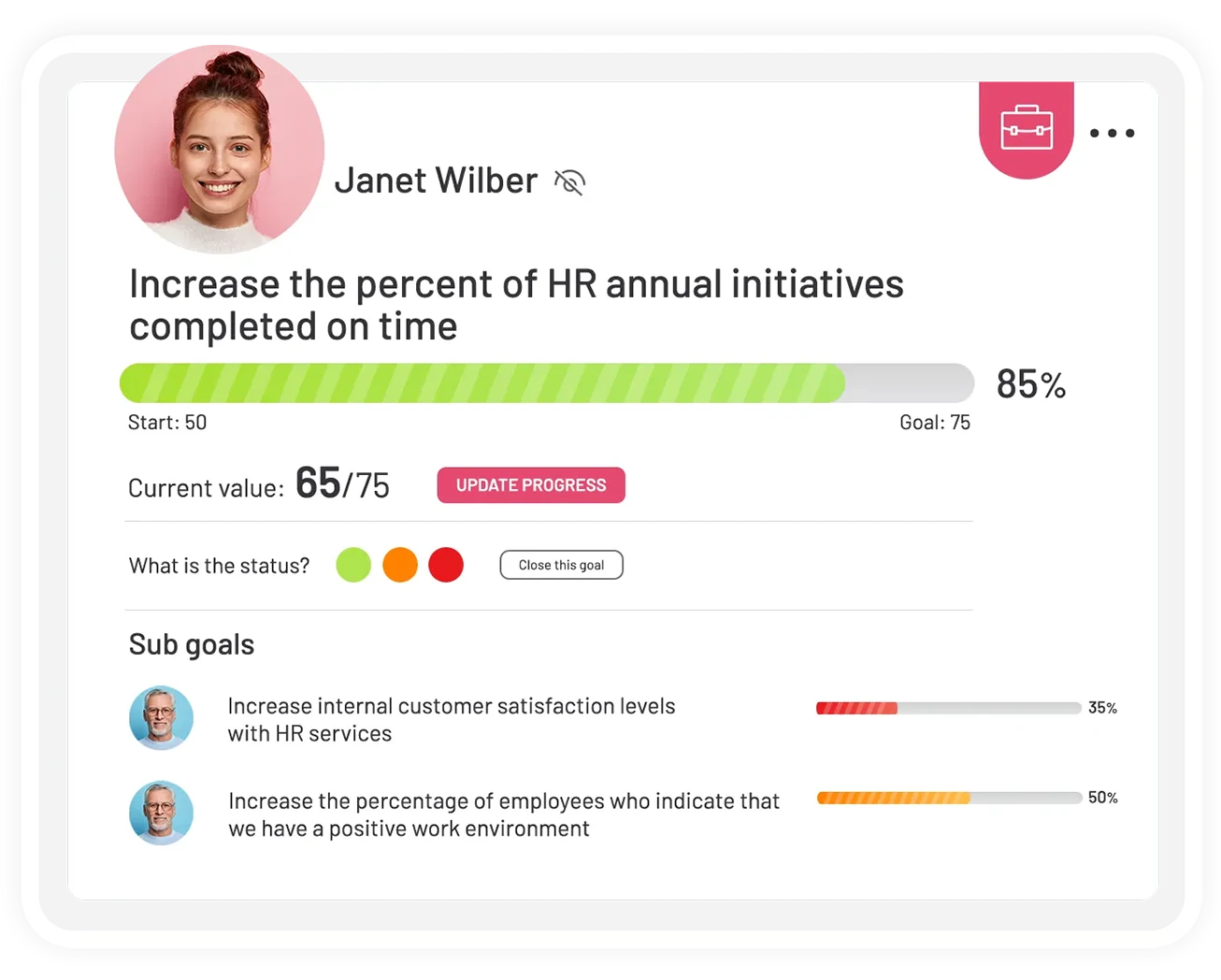If you regularly set goals for a team or company, you have probably seen and heard the abbreviation OKR more than once. OKR stands for objectives and key results. It is a goal-setting methodology designed to help teams more easily move towards their most important goals and track progress towards achieving them.
OKRs use a simple and highly stretch goal-setting tool that can be tailored to suit any purpose:
I will achieve [objective] that can be measured by [key result].
The objective, or a goal, is what you want to achieve: for example, increase brand awareness, reduce your greenhouse gas emissions to the lowest in the industry, and so on.
The key result is the metric by which the progress towards the goal will be measured: for example, getting a million views on the site, making sure that a quarter of the materials used for production are biodegradable, and so on. It helps companies to set measurable goals for the entire organization and run effective performance management.
The history of OKR can be tracked back to 1954 when Peter Drucker invented the central concept of “management by objectives” (MBO). In the year 1968, this concept evolved to OKRs as we know them today. OKR Methodology s a dynamic idea that leaves companies a tremendous number of possibilities to create ambitious goals.
Table of Contents
What Is OKR Methodology In Business?
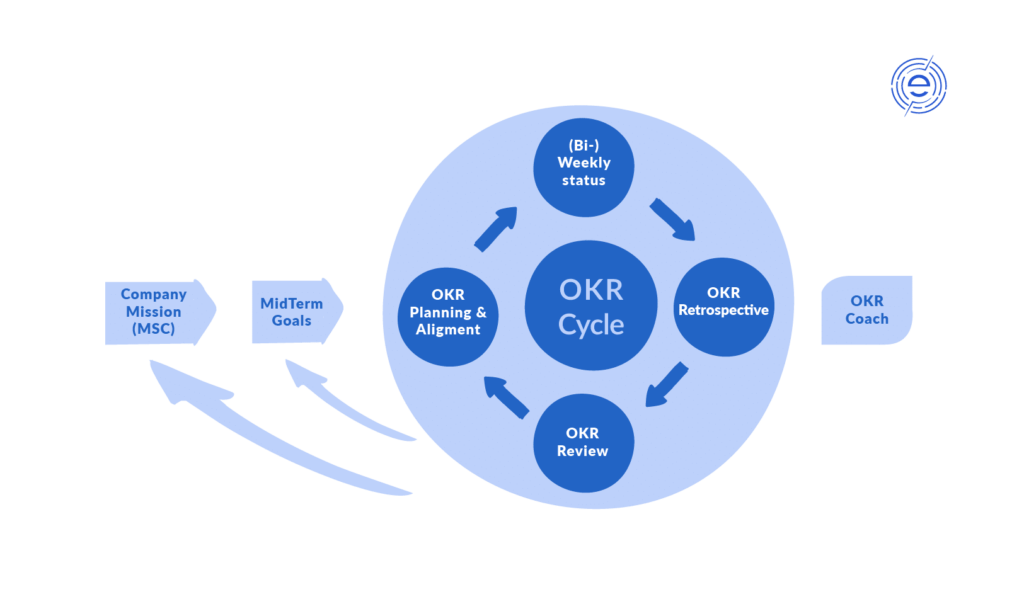
Possibilities of OKRs in business
- Getting rid of micromanagement. The manager can concentrate on big and important company goals for the entire organization.
- Development of creativity. Performers have the freedom to choose how they achieve results.
- Objective assessment of the results. Measurable KPIs allow you to objectively assess whether a goal has been achieved.
- Increased responsibility and team involvement. Since teams set goals themselves, they take responsibility for achieving them.
Who Are OKRs For?
- Small start-ups where it is important for the whole team to work in the same direction. Especially in technology industries, where you need to grow quickly in order to receive investments before the initial capital runs out. Competence and structure in setting OKRs will show investors that the company knows where it is going and understands what steps need to be taken to achieve the planned results.
- Medium-sized companies that are expanding. Tracking OKR will be useful for synergy of work – teams will be synchronized vertically and horizontally.
- Large companies. The methodology cultivates team cohesion while encouraging autonomy and independence. Everyone works and is responsible for their individual okrs , but everyone strives to achieve common company goals.
Advantages Of OKRs In Business
- Efficient performance management. Employees are more involved and disciplined – everyone sees goals, and employees themselves evaluate the results.
- Correct prioritization. The focus is on achieving truly important and promising goals that will become growth triggers.
- Transparency. Success indicators are predefined as well as intermediate targets.
- Focusing. Resources and efforts are spent on purpose.
- Strategic consistency. The efficiency of communication between the project participants increases.
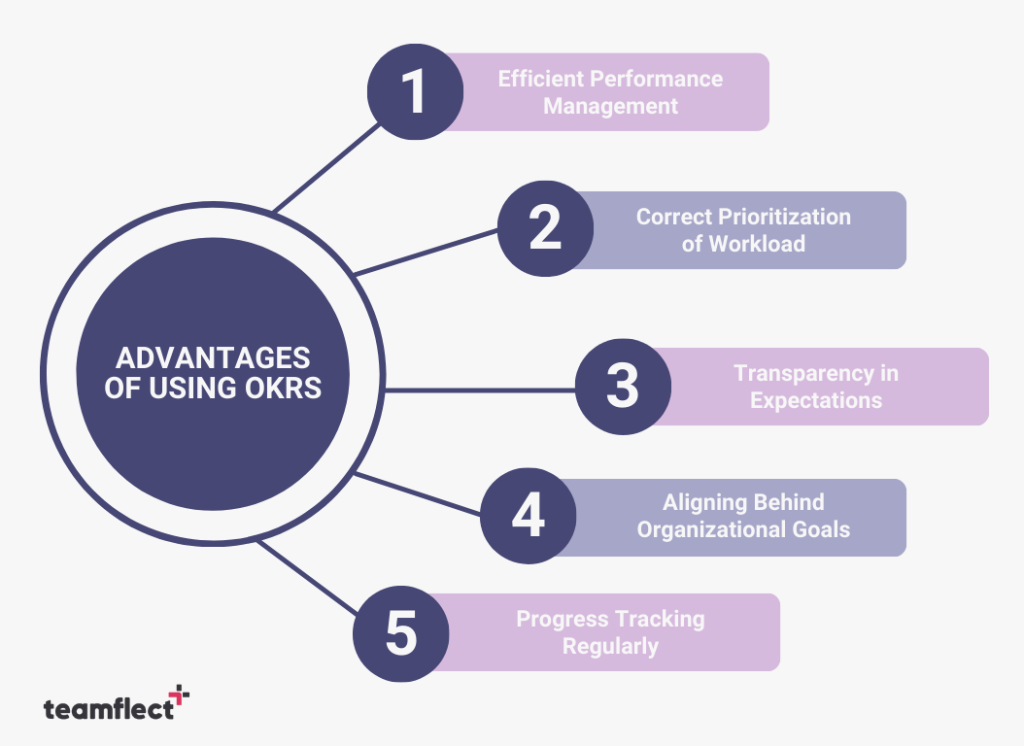
OKR Templates
The components of an OKR are elementary:
- Accurate goal setting: this is what you want to achieve. For your first OKR draft, you start by defining 3-5 key goals at the company, team, or individual level. Company goals should be ambitious, quality, time-limited, and achievable for the individual or group.
- Results. They describe how you are going to achieve the goals that you have set for yourself. For each goal, try to determine no more than 4-5 measurable results. Key results must be quantifiable, achievable, objectively measurable, challenging but not impossible to achieve. For example, OKR results can be defined as company development, productivity, income, or engagement. These results are often calculatable, but they can also be “binary,” i.e., to show that something is done or not.
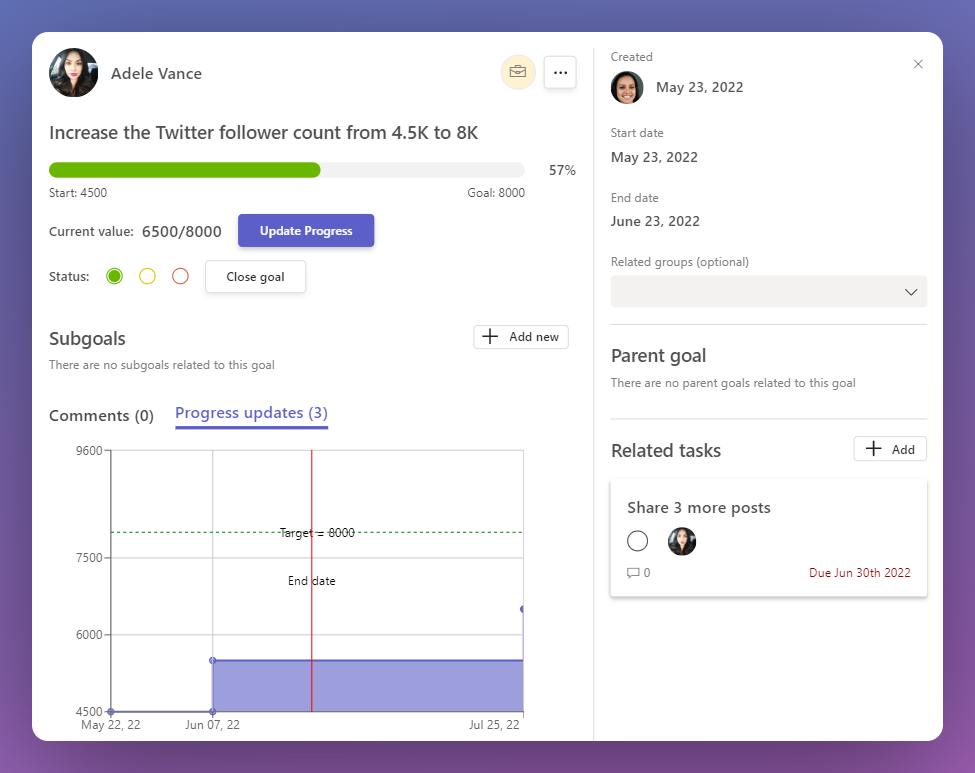
How To Set OKRs?
Once the company OKRs are defined, communicate the objectives and key results of the OKR to all stakeholders and make sure they are adequately understood. Define the wording together, if necessary, to always remain on the same track while working with OKRs.
As people start to work, they regularly update their performance measurement indicators; for example, once a week is a reasonable period. The task is considered completed when 70-75% of the result is achieved. If the company goals are 100% fulfilled, it is believed that it was not ambitious enough.
Update OKRs regularly as needed. Be flexible. If your personal, team, or company goals change, feel free to change the OKR together. No process should be more important than common sense and day-to-day business. OKRs process is dynamic, so don’t hesitate to keep the OKR cycle updated.
Since OKR goal-setting might be tricky, most companies may fail during the OKRs process. To avoid common OKR mistakes, you can take a look at our article here.
Useful OKR Examples:
Objective 1: To design, create and launch a new product.
Key Results:
- Survey 50 existing customers on what they would like to see in a new product line
- Create a new product
In this case, the OKR might take some work. It is probably not possible to achieve the goal in a single quarter. While the first KR is well formulated, the second result is not quantifiable and thus represents a negative example.
Objective 2: Implement a new email campaign
Key Results:
- Write email copy to send to outbound leads
- Obtain a list of outbound leads
- Send e-mail to everyone on the list
Unfortunately, this would not be considered an OKR example but rather a project with a task list. Remember that goals are big ambitions, and OKR methodology is a quantifiable degree to achievable goals.
Here are further OKR examples you can follow. You can simply use them as an OKR template as you go forwarded and set your own OKRs:
Objective: Increase website traffic by 25%
- Key Result 1: Improve website SEO by optimizing meta tags and content
- Key Result 2: Increase social media engagement by 50% through more frequent and engaging posts
- Key Result 3: Launch a targeted email marketing campaign to reach a wider audience
Objective: Enhance customer experience and satisfaction
- Key Result 1: Implement a customer feedback system to gather feedback from customers
- Key Result 2: Reduce response time to customer inquiries by 50%
- Key Result 3: Increase customer retention rate by 20%
Objective: Increase sales revenue by 15%
- Key Result 1: Expand product line by launching 2 new products
- Key Result 2: Increase marketing spend by 30% to target new customer segments
- Key Result 3: Improve sales team performance by providing regular training and coaching
Objective: Streamline internal operations for greater efficiency
- Key Result 1: Implement a project management system to track progress and reduce delays
- Key Result 2: Automate manual processes by integrating technology tools
- Key Result 3: Standardize workflows across teams to minimize errors and confusion
Objective: Improve employee engagement and retention
- Key Result 1: Conduct regular employee satisfaction surveys and take action based on feedback
- Key Result 2: Increase opportunities for professional development and training
- Key Result 3: Offer competitive compensation and benefits package to attract and retain top talent.
How To Track OKRs In Microsoft Teams?
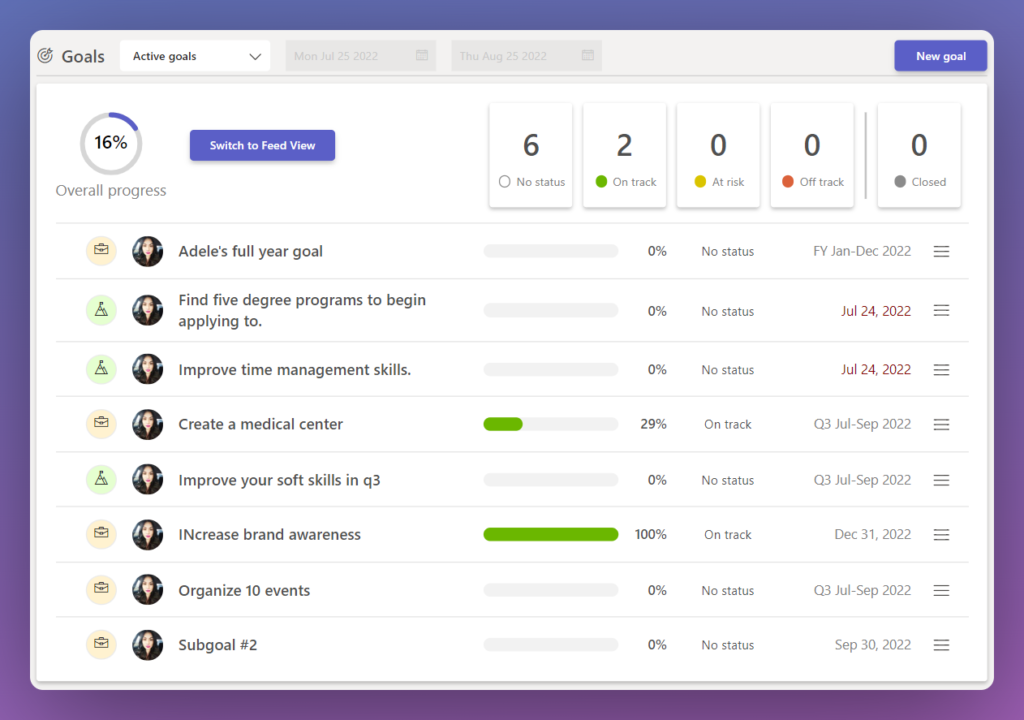
The best way to track OKRs inside Microsoft Teams is to take advantage of an OKR or goal-setting software built for the platform. There are plenty of viable alternatives out there but the best OKR software for Microsoft Teams has to be Teamflect.
All you need to do in order to track OKRs effectively inside Microsoft Teams is to visit the Microsoft Teams App Store, and download Teamflect.
Once you’ve done so, you can set OKRs with ease and have your employees regularly update their OKRs inside Microsoft Teams.
With Teamflect’s OKR software, you can easily define, align, track, and visualize objectives and key results. What is a better platform there than Microsoft Teams to track the performance of your employees and measure your company’s OKRs?
Refining goals, fostering employee engagement, and encouraging feedback have never been easier with the Teamflect app for Microsoft Teams.
Teamflect allows you to do the following:
- Organize effective 1-on-1 meetings, that will help keep all the members of the organization on the same page with regards to the OKRs.
- Use the OKR / Goal setting tool to make sure the goals and plans are persistent among the employees.
- Increase transparency within the organization by tracking goals and the progression of their completion.
- Reward your employees for their work and keep them motivated to achieve more goals in the future through the Recognitions option.
- Integrate feedbacks into your goal tracking with an exceptional feedback module.
- Access templates designed with intuitivity in mind to cut down on your workload.
…and much more.
All of this without ever having to leave Microsoft Teams to access a secondary software. With an accurate OKR cycle and the right OKR software, you focus on the essential measures in your company at all levels. This will increase your motivation – and your company will achieve success even faster and remain profitable in the long term.
